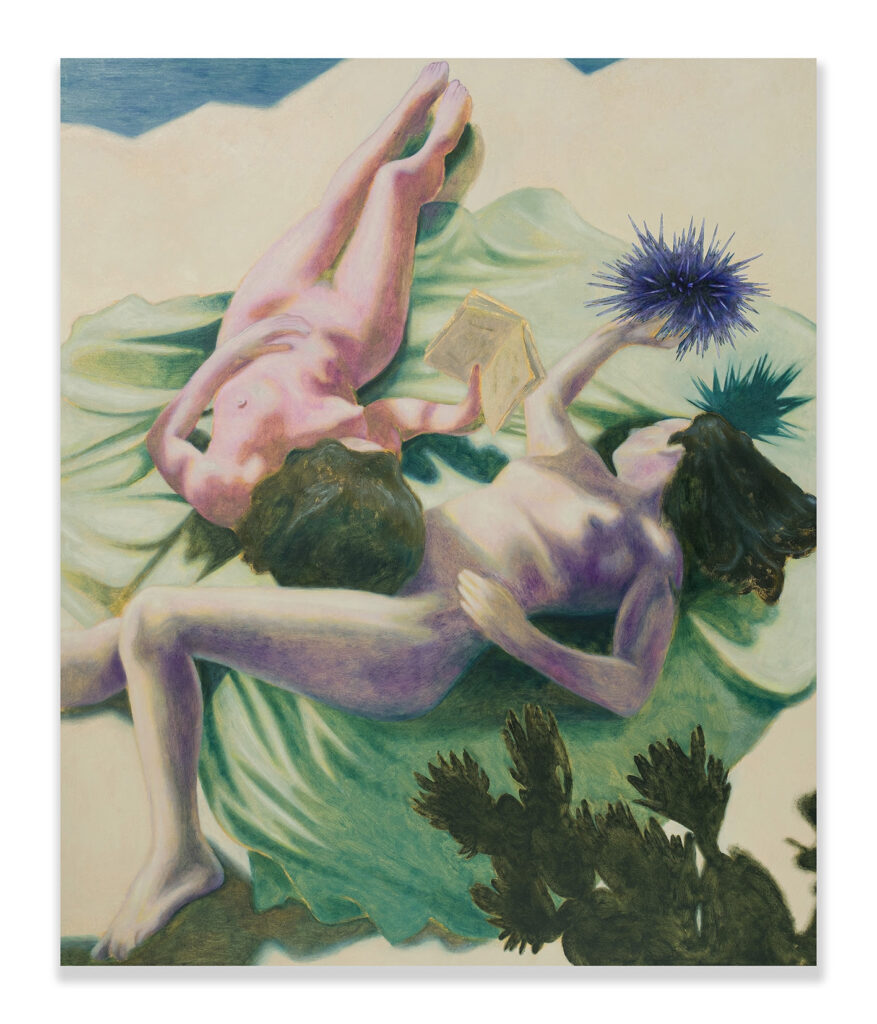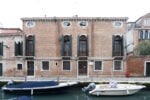Eleonora Rinaldi – Spumes of Flowers

Eleonora Rinaldi presenta “Spumes of Flowers” individuando nella poesia Le Bateau Ivre di Arthur Rimbaud la principale fonte di ispirazione per la sua progressiva indagine pittorica.
Comunicato stampa
Drawing inspiration primarily from Arthur Rimbaud’s poem “Le Bateau Ivre” for her ongoing pictorial research, Eleonora Rinaldi presents “Spumes of Flowers”. Devoid of any rhetoric, the visionary world behind the poem wends its way freely and autonomously through her canvases, influencing the aesthetic and formal sense far beyond its purely literary meaning. This emerges clearly in Rinaldi’s work, in the way in which she remains consciously detached while structuring her images, which naturally generate multiple narratives, both individually and in their hypothetical relationships. In any case, they appear in a way that is somewhat cryptic and never definitive.
Her choice of subjects starts with photographs cut out from books, magazines, or taken from the web. There comes a point where intuitive interconnections emerge, and Rinaldi sees them as functional to her art. It is here that the initial creative step comes about – in the form of drawing. It is only after this that the painting takes shape. It starts out from the drawing and, together with its bold trace, it gives meaning to the potential offered by the white spaces. The layered spreading of color is accompanied by a continuous process of application and removal, which is made possible by the underlying plaster and resin base.
Just as Rimbaud takes us on an emotional journey that wavers between reality and evasion, and that is both tumultuous and hallucinatory. The painter tells of an imaginary relationship between humanity and nature: plausible, and yet distorted. And even metamorphic, since it accentuates specific characteristics. What we see reflects an internal landscape that is inherently unresolved and yet filled with a striving for potential reconciliation. Here we find a vision that is suspensive and but less surreal and disturbing than that of the symbolist poet. For example, Rimbaud views the poetic vision of memory as an obstacle to catharsis, which can always and only be achieved through escape from reason. Rinaldi goes against this perspective and embraces the element of memory, which becomes the cornerstone of her approach:
“As a child, my grandfather used to take us grandchildren on adventures in the fields and woods, picking flowers and catching crickets and lizards. Those moments have always remained impressed upon my memory as something magical and distinct from everyday life. In a way, painting lets me relive those moments of wonder, enhancing them with a degree of exoticism that takes them even further.”
As though in a dreamlike exploration in reverse, this artistic journey unfolds in the retrieval of a bygone age, forever wavering between memory and latent re-formulation. As though eyeing each other from afar, Rimbaud and Rinaldi reveal various dialectical correlations even in the distance between their styles. This is particularly true of the way in which they create their synaesthetic world of the imagination, which are replete with visual and chromatic evocations. They ultimately turn into auditory, olfactory, gustatory, and tactile promptings, eliciting amazement in the viewer, who is able to reach into the very essence of the artists.
And Rinaldi explains:
“The images I construct are undoubtedly narrative, since for me it is crucial that they have something to say. However, I have no intention of manipulating or exerting any conscious control over their content. Ultimately, a finished painting is a revelation for me as much as for anyone.”



